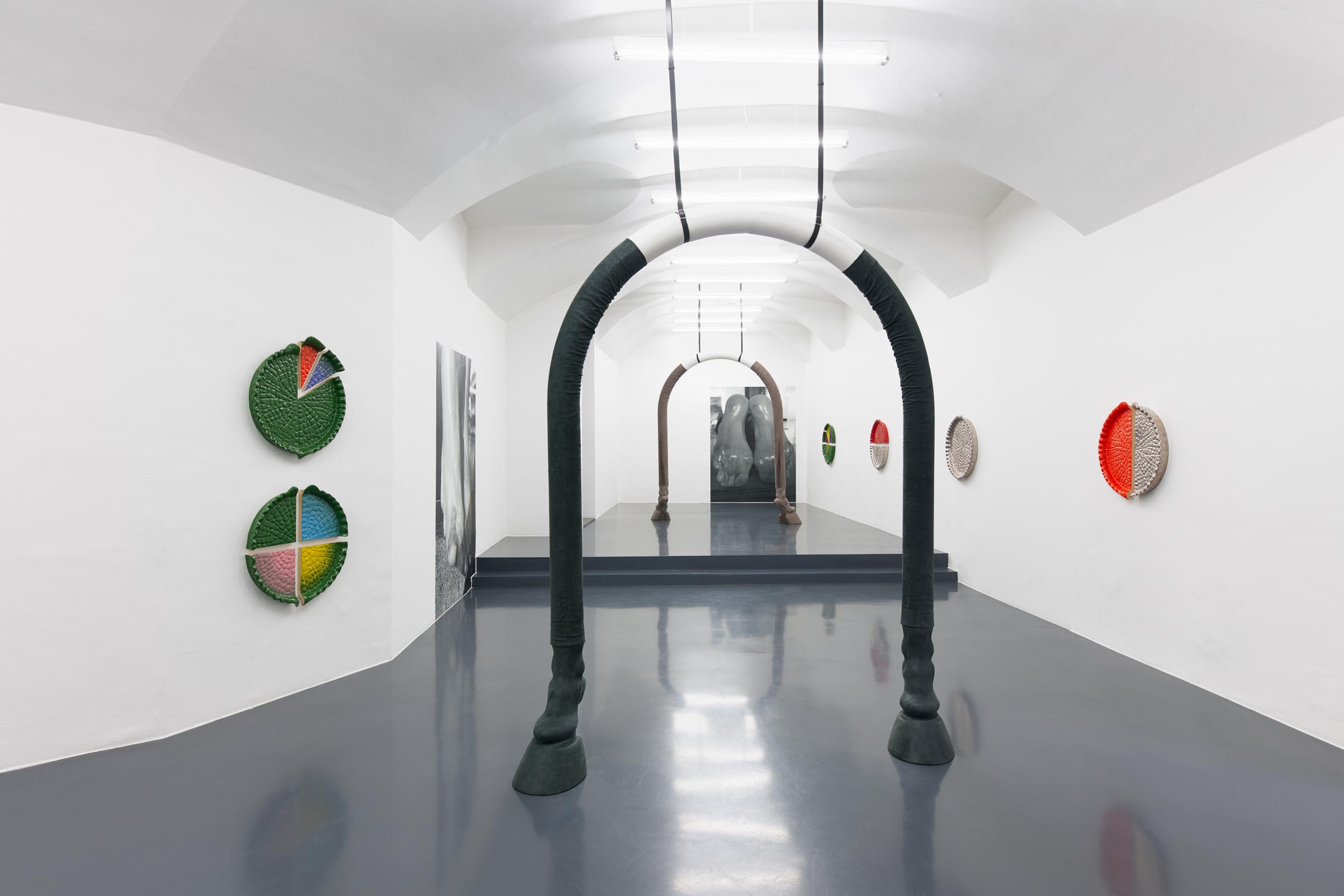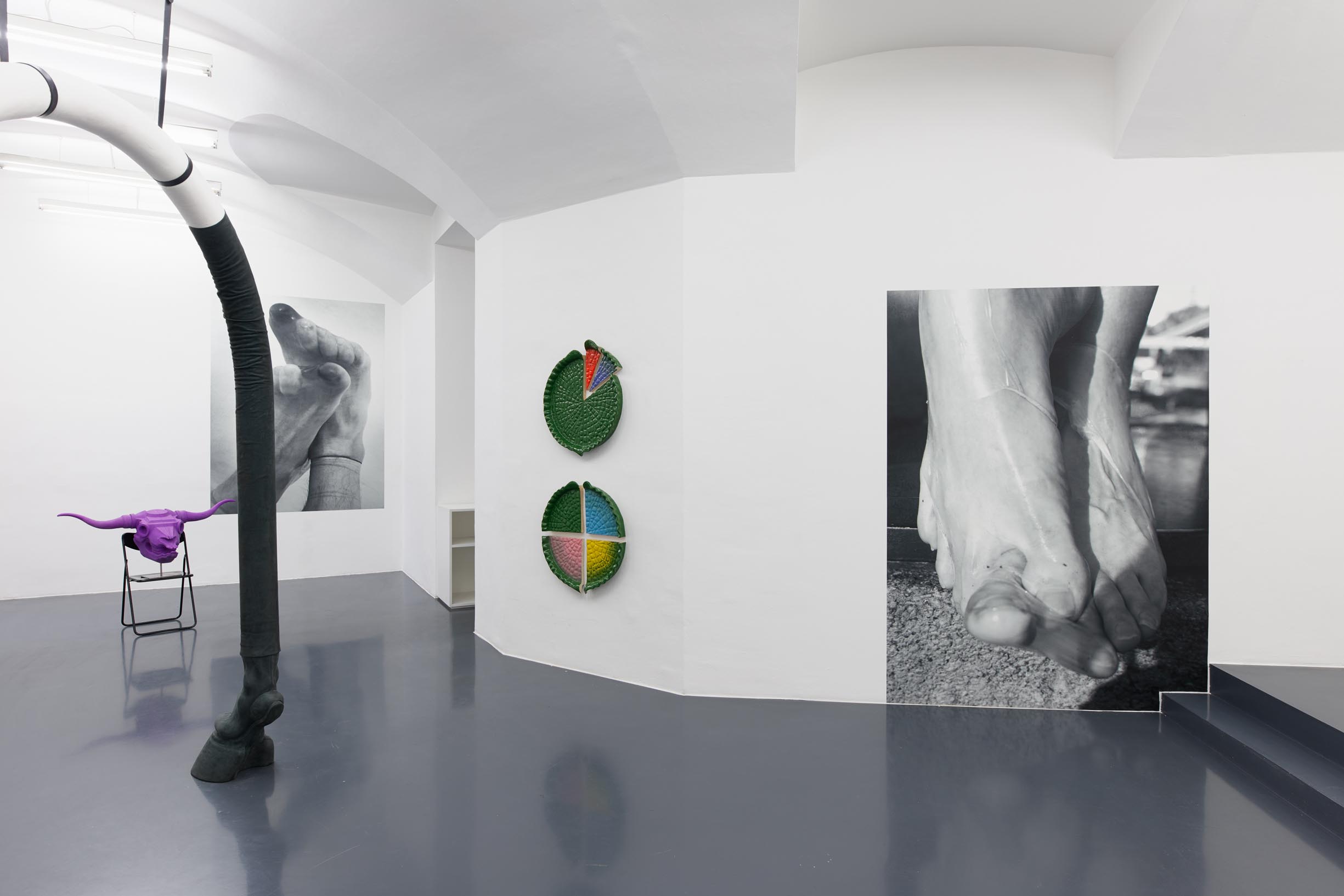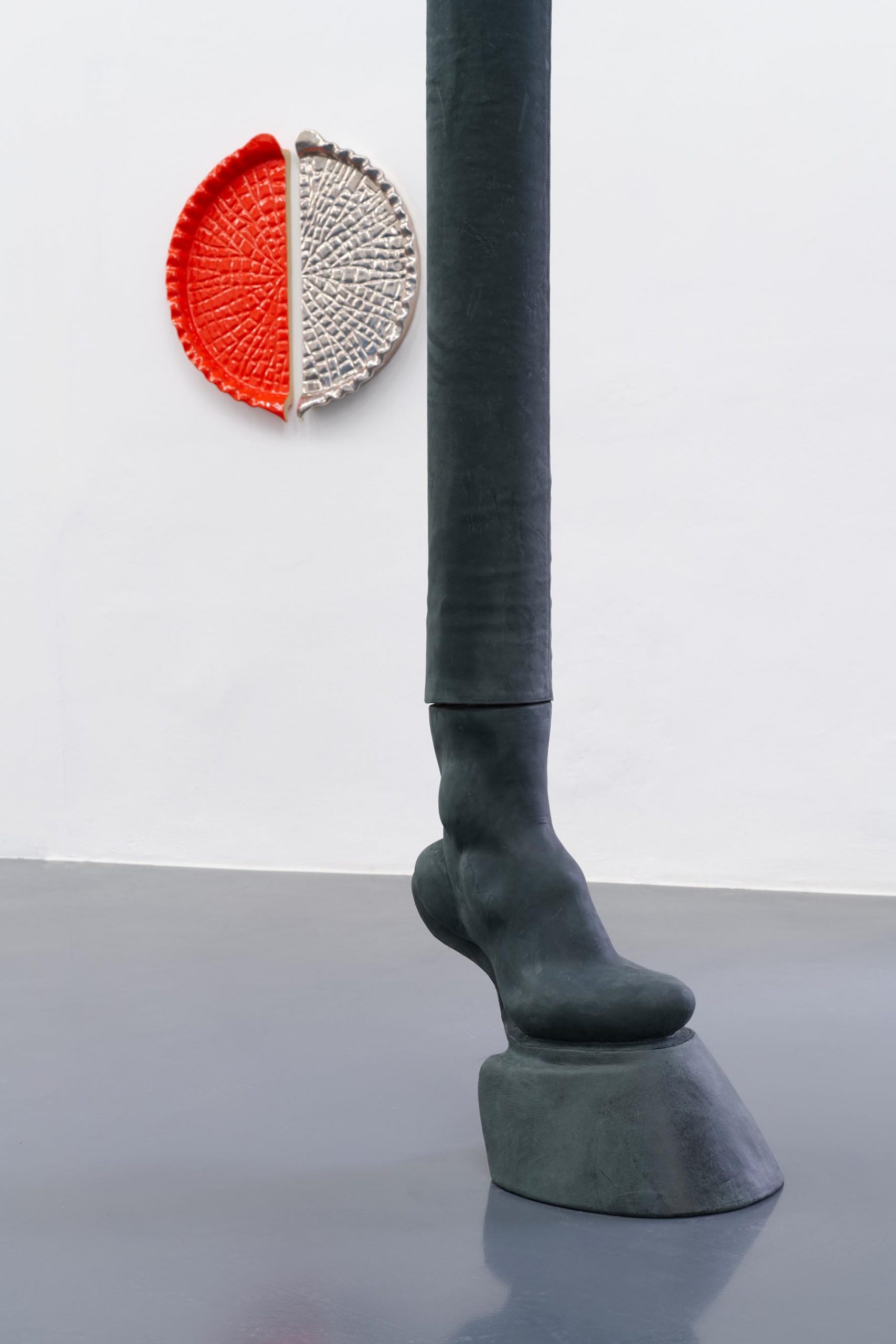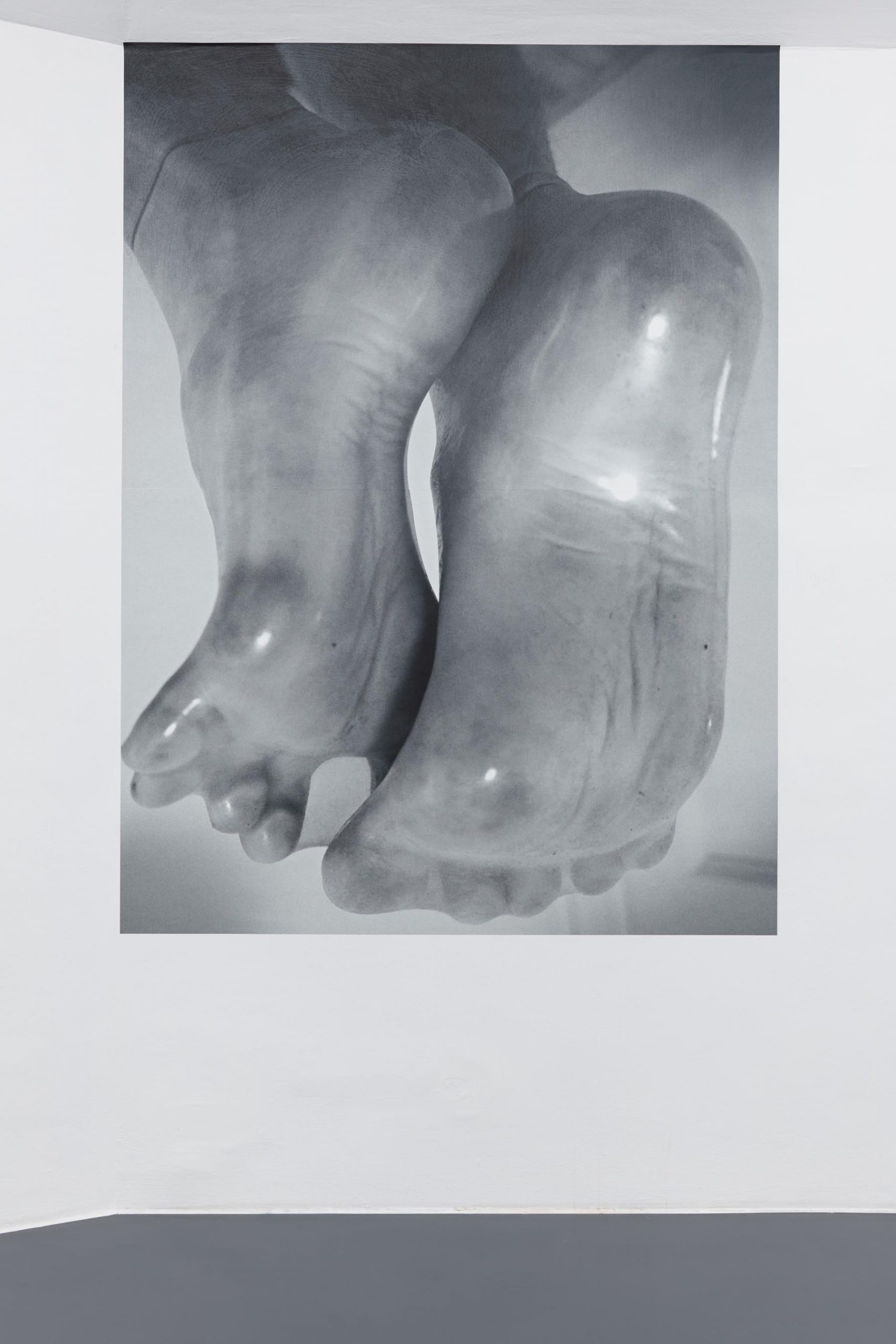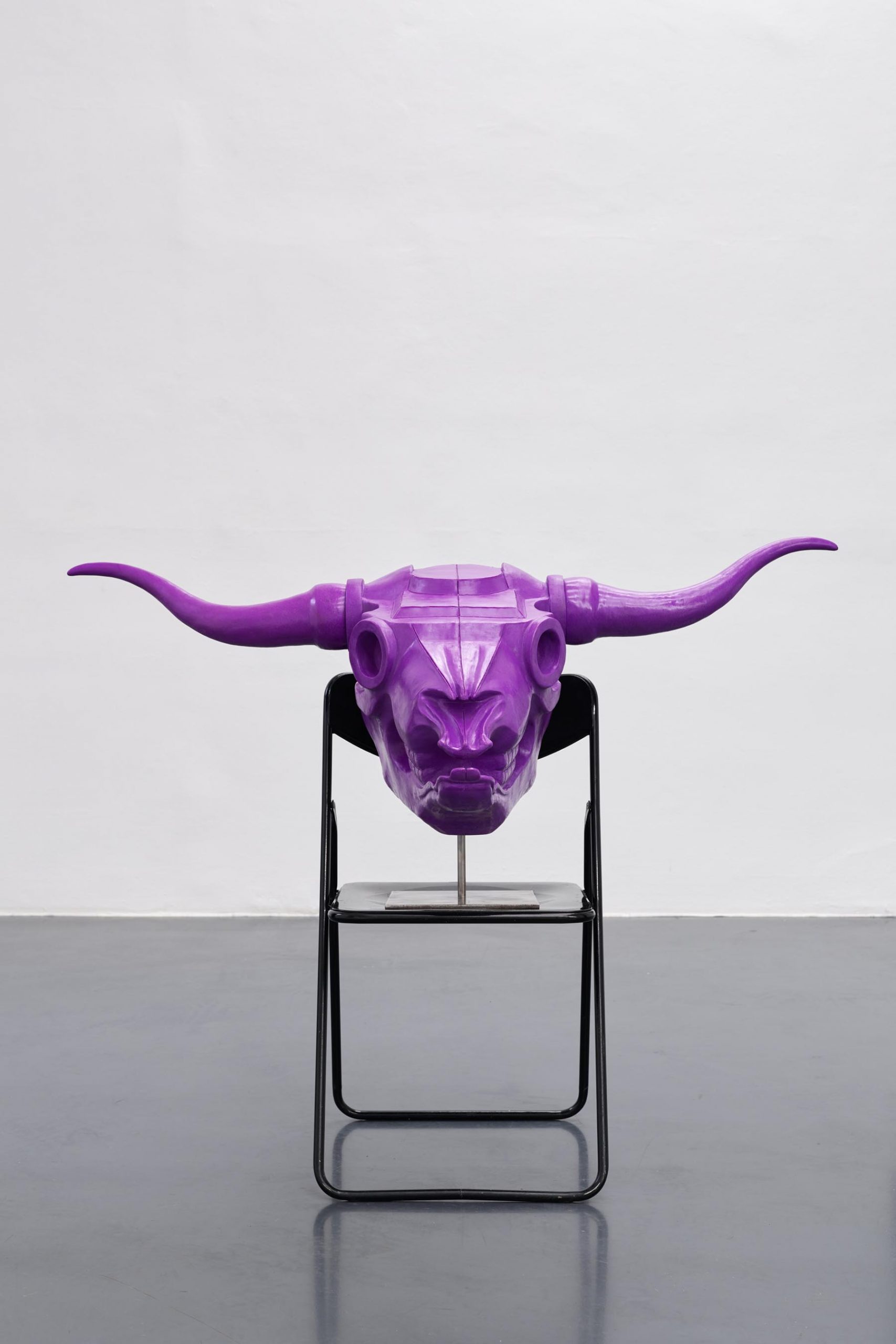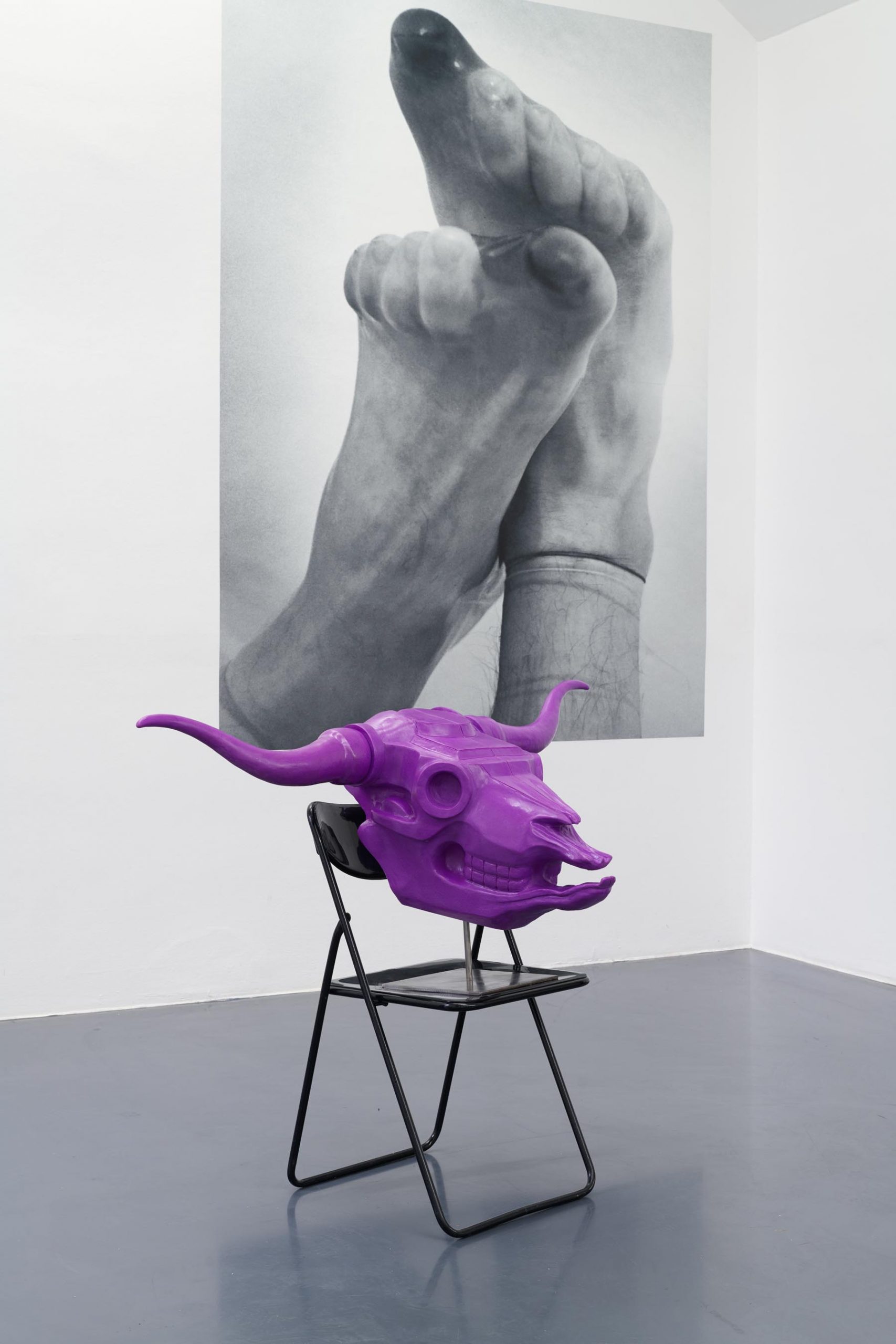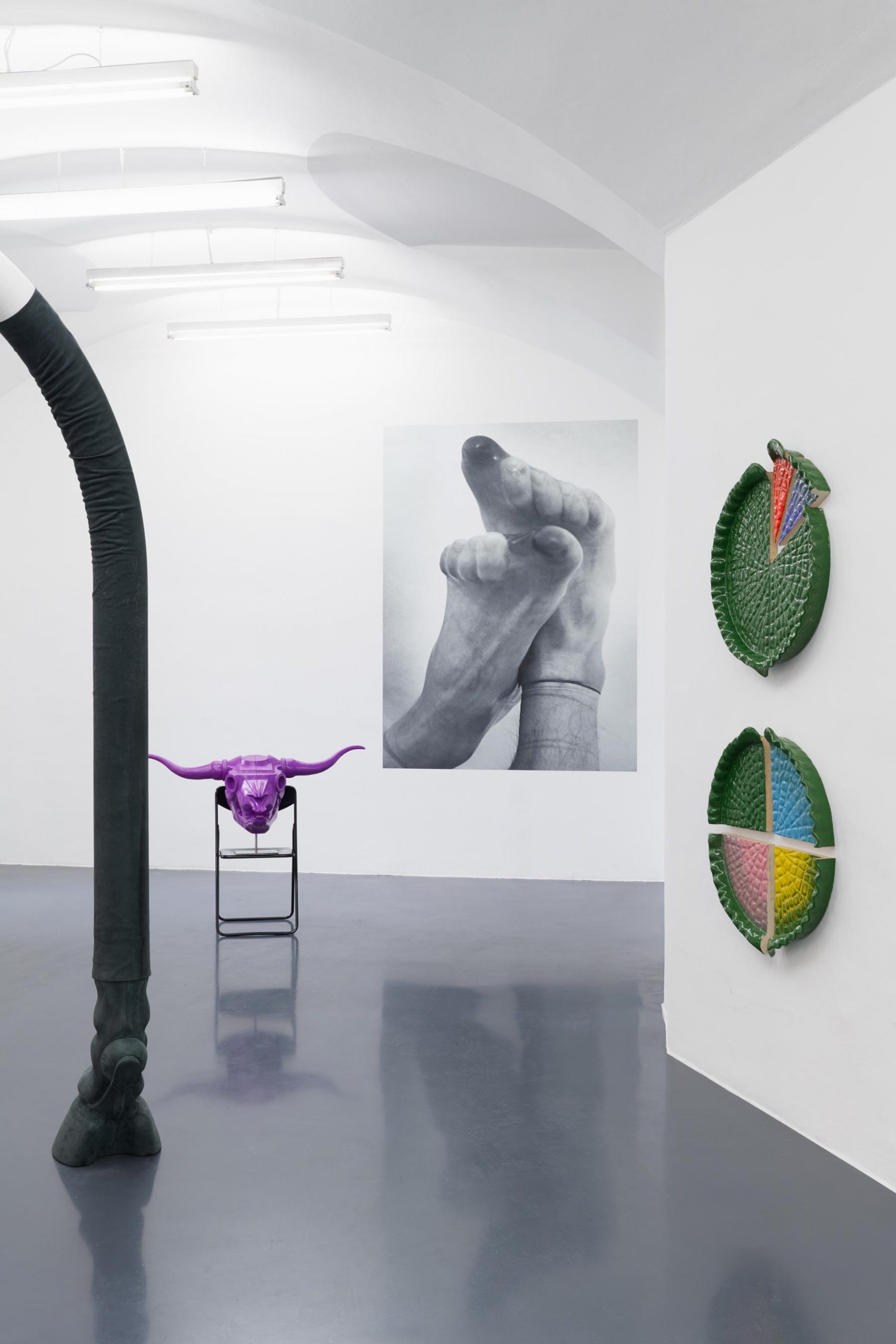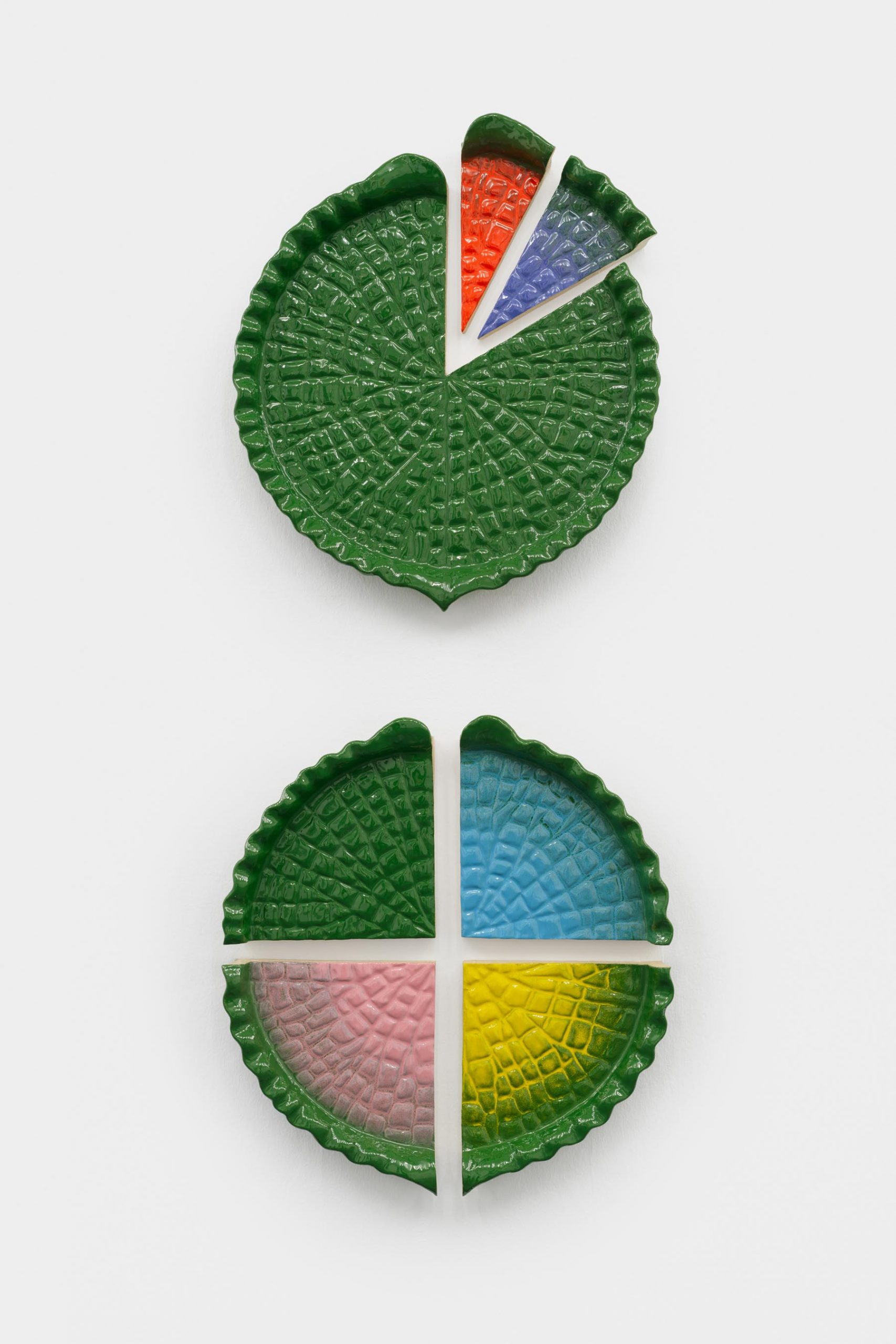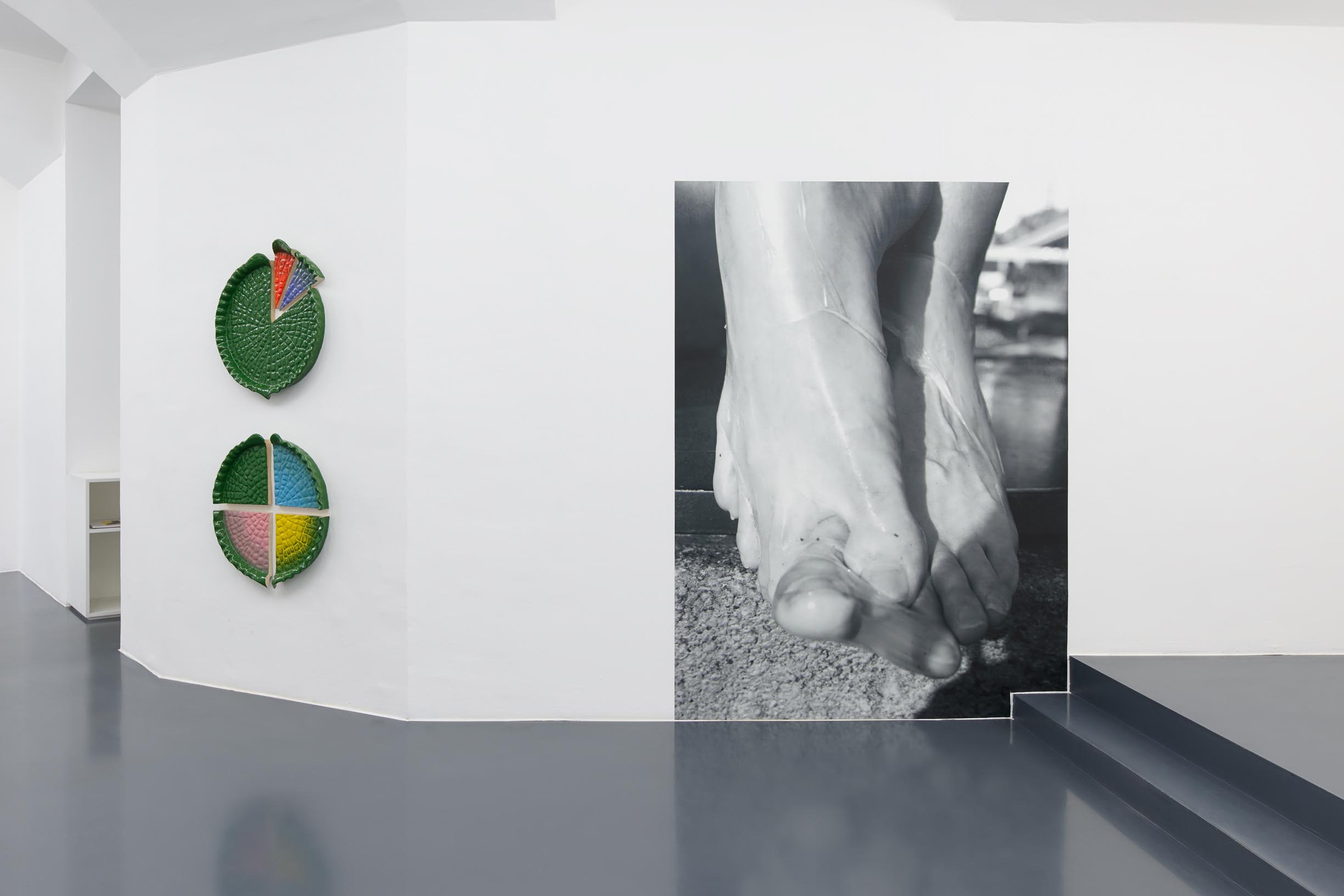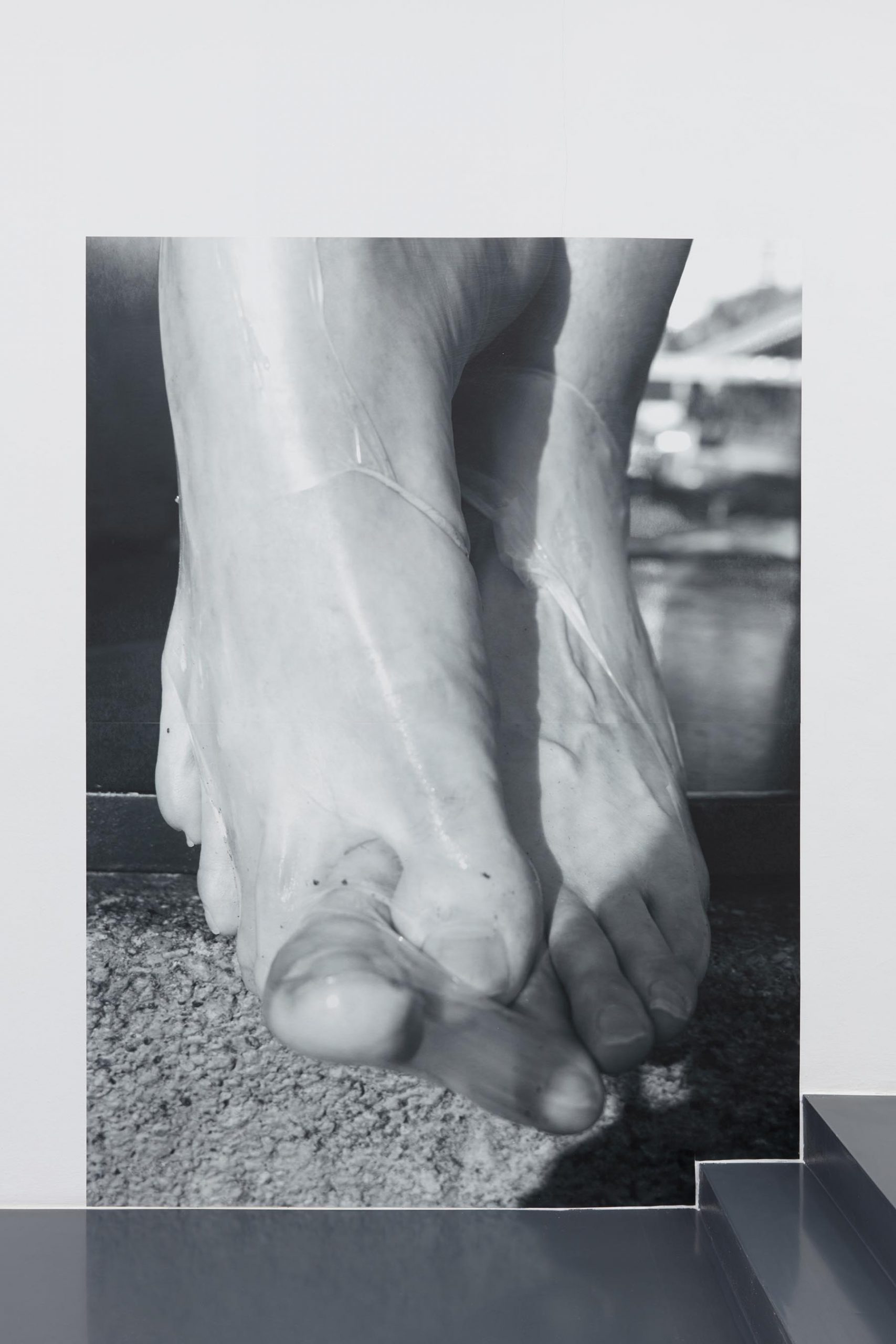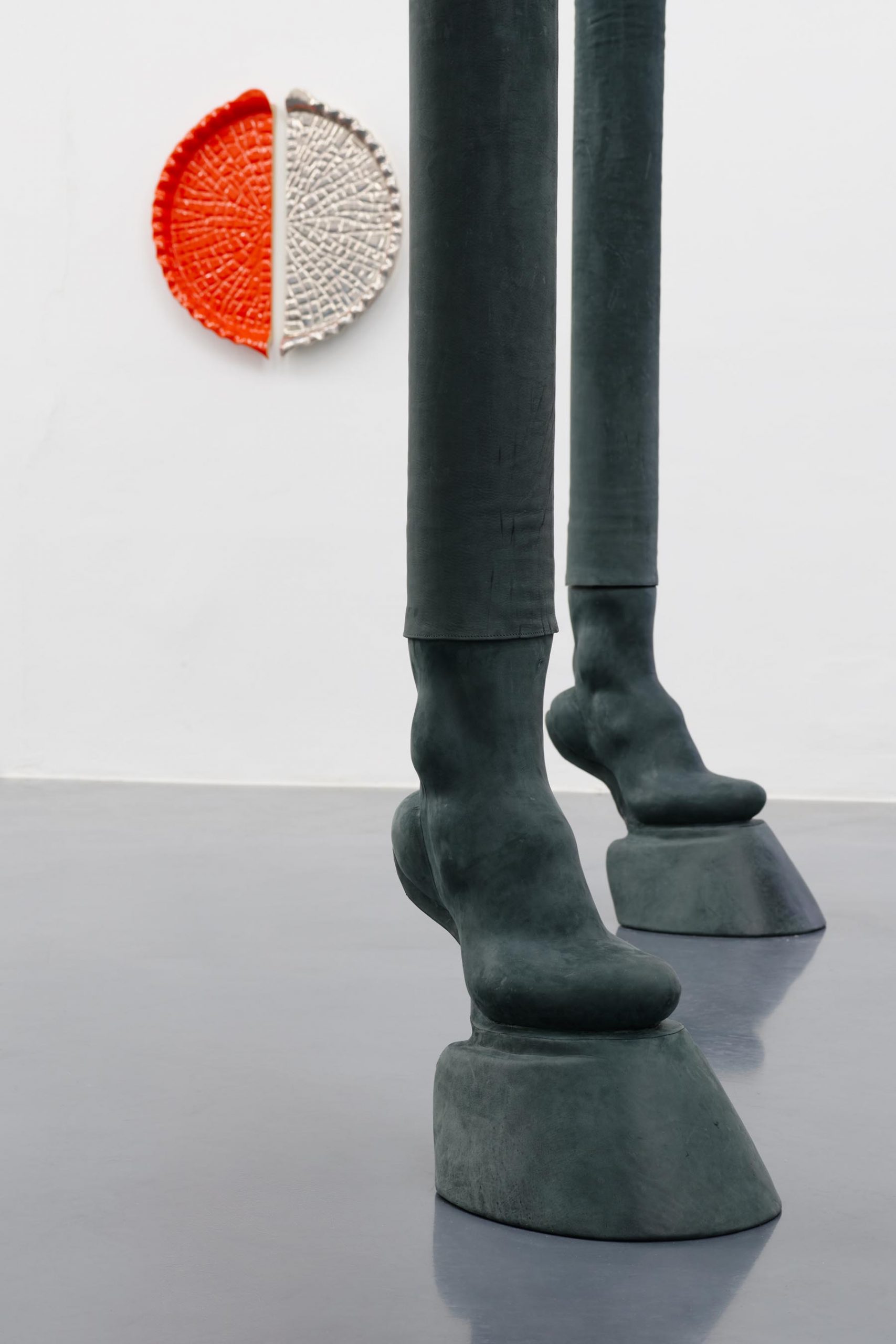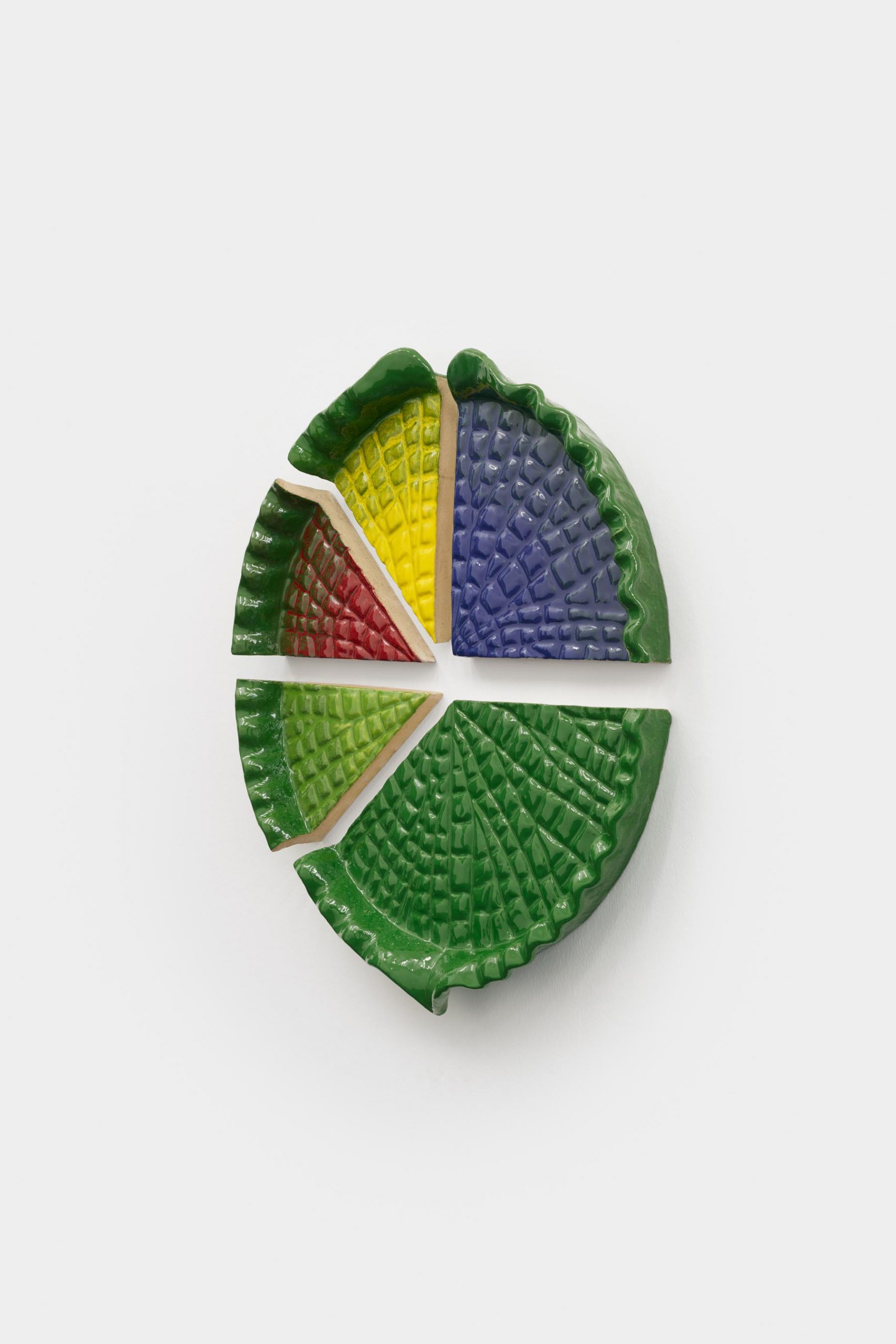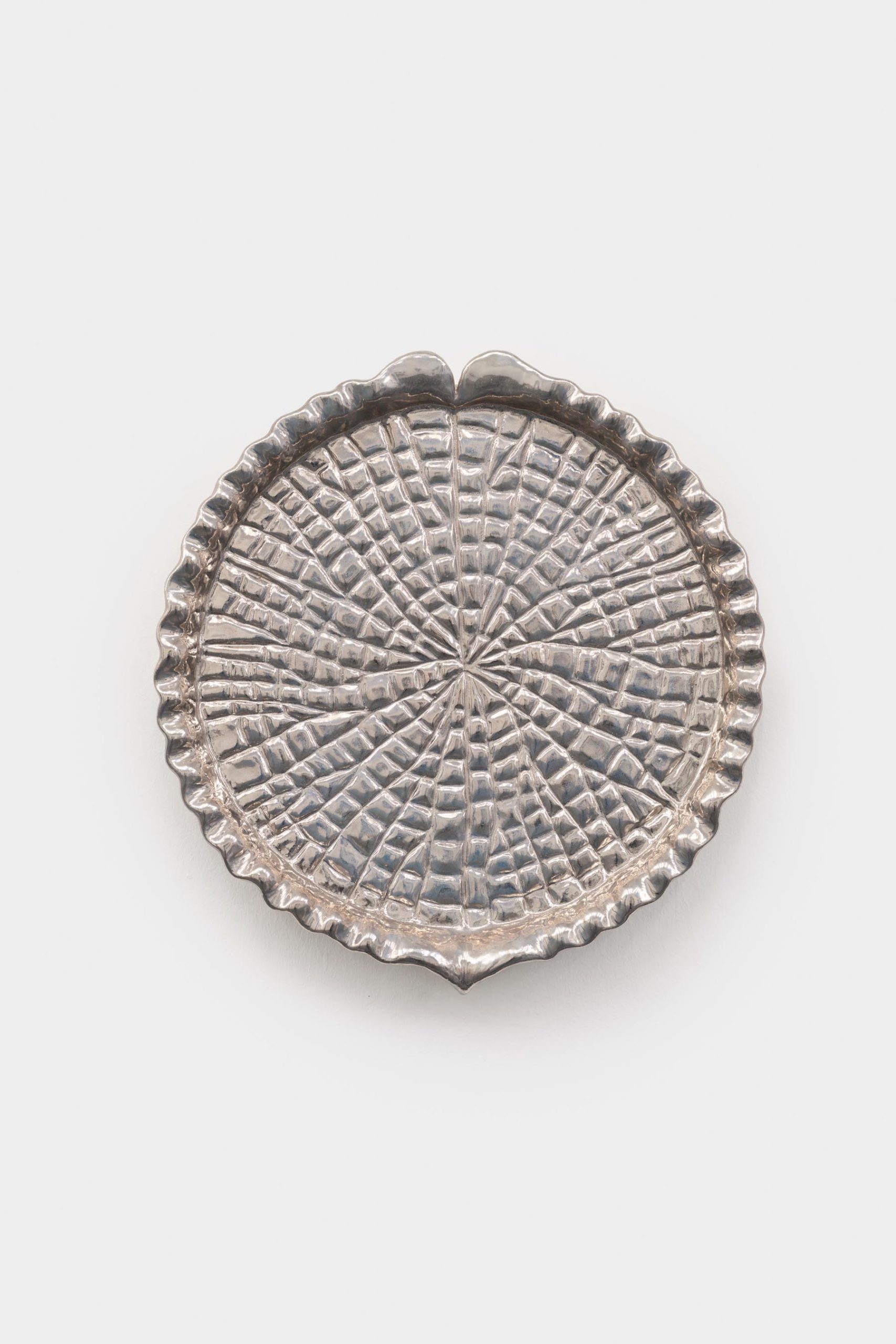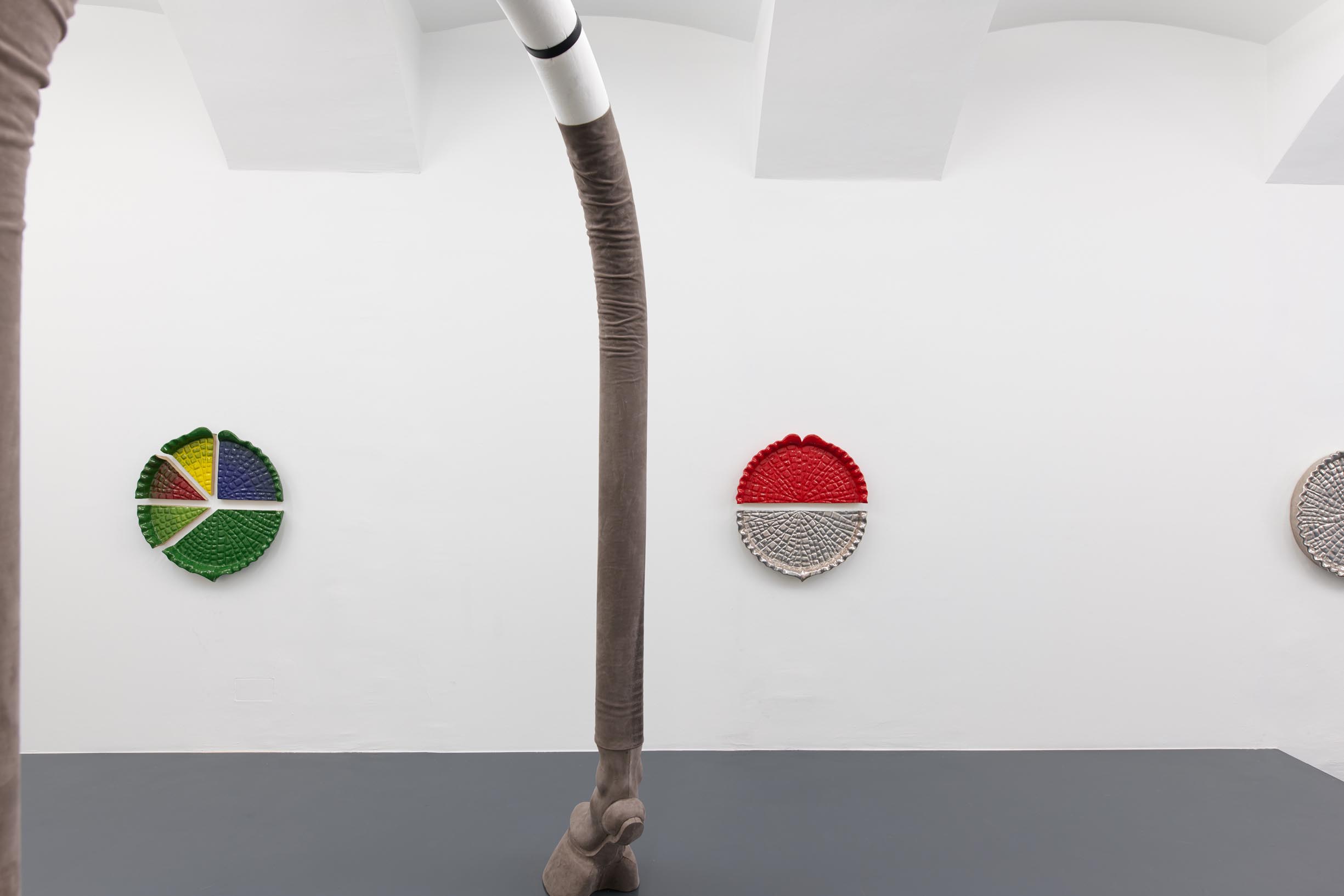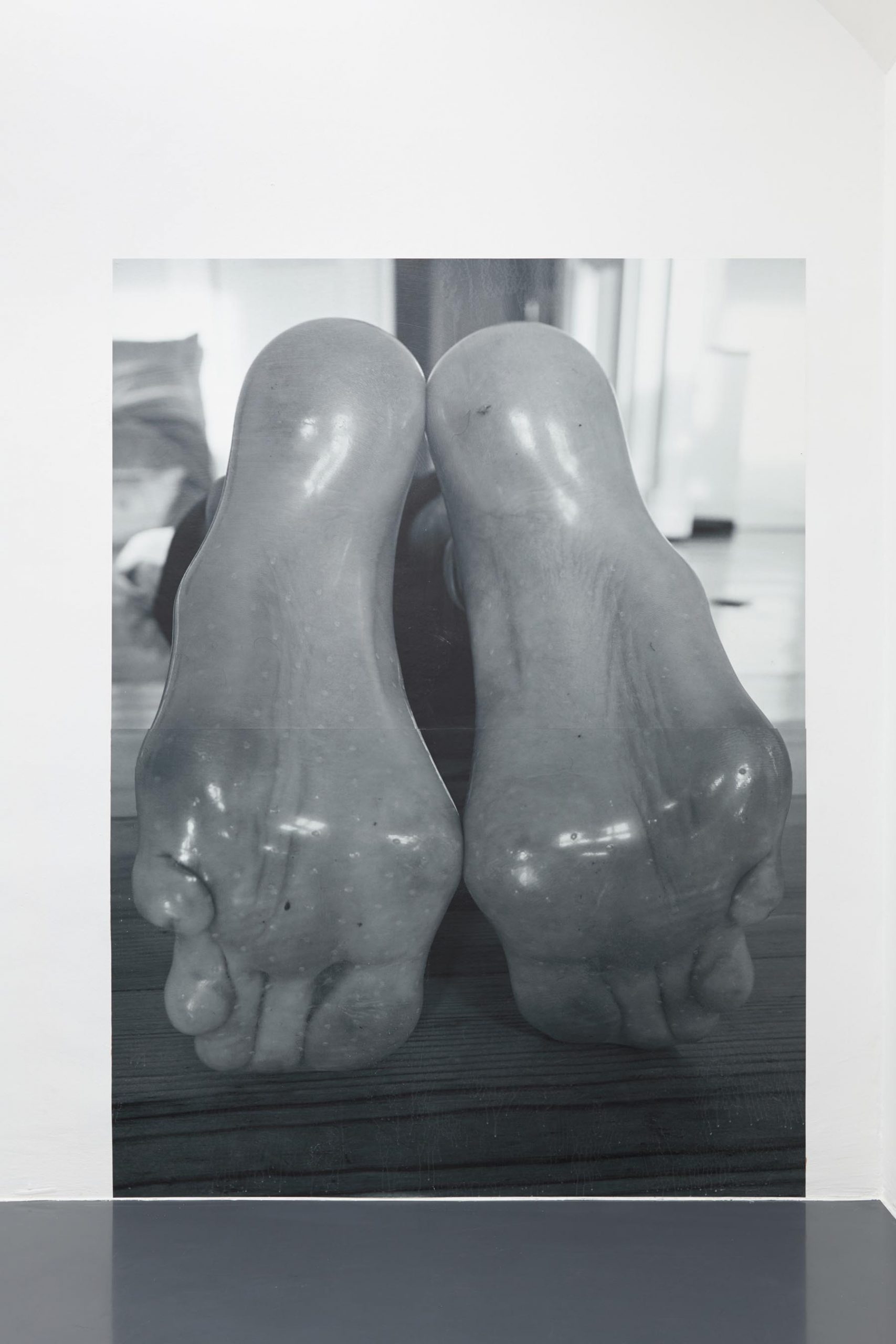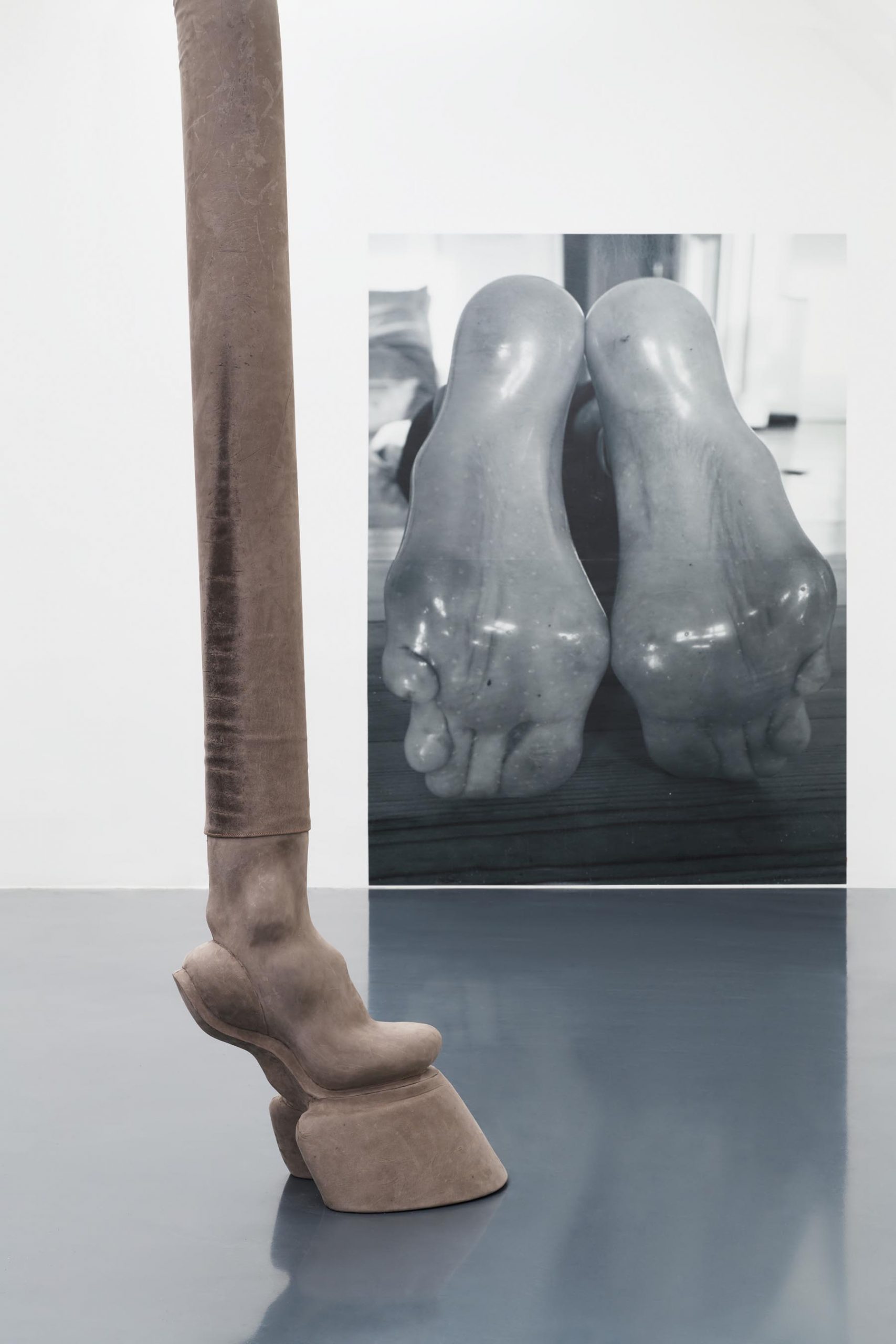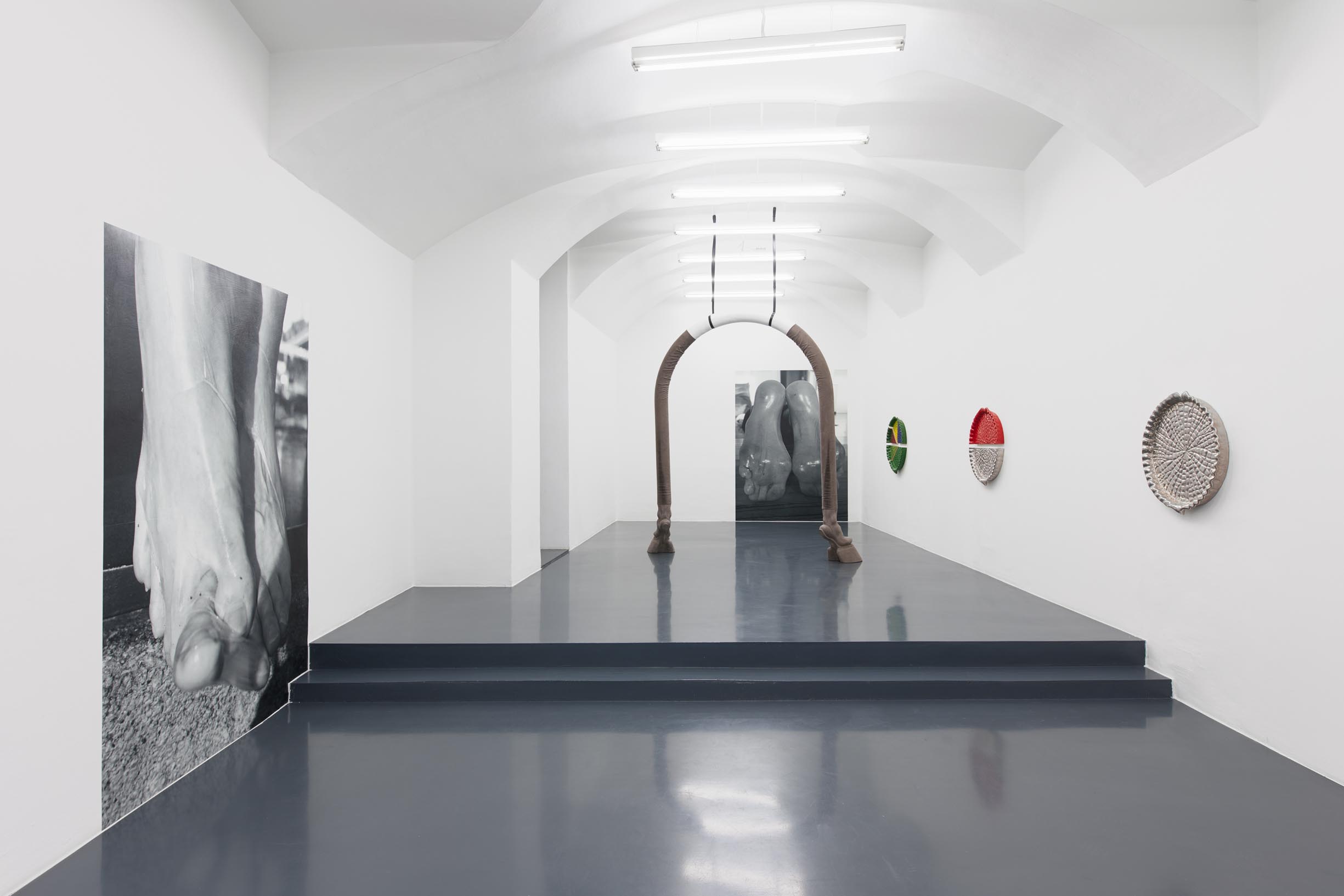CLOSE
2024
Heidi Horten Museum, Vienna, Austria (forthcoming)
PPC, Frankfurt, Germany (forthcoming)
06.08-08.10.2024
Skulptur Projekte Stockholm
Beau Travail
Stockholm, Sweden
Skulptur Projekte Stockholm
Beau Travail
Stockholm, Sweden
05.23-07.27.2024
Our Porcelain Thoughts
DREI
Cologne, Germany
Our Porcelain Thoughts
DREI
Cologne, Germany
11.04-05.18.2024
Dark Glasses
Layr
Vienna
Dark Glasses
Layr
Vienna
2023
15.12.2023 – 07.04.2024
Your and your vim
Aspen Art Museum
Colorado, USA
Your and your vim
Aspen Art Museum
Colorado, USA
02.09.2023-07.01.2024
Good Year
MARTa Museum Herford
Herford, Germany
Good Year
MARTa Museum Herford
Herford, Germany
03.05-14.06.2023
Nature wills it
The Ranch
Montauk, New York
Nature wills it
The Ranch
Montauk, New York
04.11-10.12.2022
Apple Red Cranberry House
Bortolami
New York
Apple Red Cranberry House
Bortolami
New York
27.08-11.12.2022
Forest Through The Trees
Laumeier Sculpture Park
St. Louis, Missouri
Forest Through The Trees
Laumeier Sculpture Park
St. Louis, Missouri
2022
30.04-30.07.2022
Auf dem Asphalt botanisieren gehen
Klosterfelde Edition
Berlin
Auf dem Asphalt botanisieren gehen
Klosterfelde Edition
Berlin
30.04-11.06.2022
Looking Through the Threshold
carlier gebauer
Berlin
Looking Through the Threshold
carlier gebauer
Berlin
17.02-28.10.2022
ALDO ROSSI’S SLEEPING ELEPHANT
Belvedere
Vienna, Austria
ALDO ROSSI’S SLEEPING ELEPHANT
Belvedere
Vienna, Austria
2021
26.10.2021–29.01.2022
Lives of an Object
ARCH
Athens, Greece
Lives of an Object
ARCH
Athens, Greece
12.06.-17.10.2021
Lichtenfels Sculpture
Austria
Lichtenfels Sculpture
Austria
28.04.-20.06.2021
I Think I Look More like the Chrysler Building
Vleeshal
Middelburg
I Think I Look More like the Chrysler Building
Vleeshal
Middelburg
27.03.2021-28.03.2021
Friend of a Friend
Warsaw
Poland
Friend of a Friend
Warsaw
Poland
2020
09.12.2020-30.01.2021
Babysteps into Masochism
Emanuel Layr
Vienna, Austria
Babysteps into Masochism
Emanuel Layr
Vienna, Austria
10.09.2020-07.11.2020
Fate of a cell / Η Τύχη ενός Κυττάρου
Martinos
Athens
Fate of a cell / Η Τύχη ενός Κυττάρου
Martinos
Athens
19.09.2020-31.10.2020
Ice to Gas
Pedro Cera
Lisbon
Ice to Gas
Pedro Cera
Lisbon
11.09.2020-17.19.2020
Various Others
Sperling, München
Munich, Germany
Various Others
Sperling, München
Munich, Germany
09.11.2019-08.03.2020
R.M.M. Rockefeller Center
Rockefeller Center
New York, NY
R.M.M. Rockefeller Center
Rockefeller Center
New York, NY
09.11.2019-08.03.2020
L’homme qui marche
Kunsthalle Bielefeld
Bielefeld, Germany
L’homme qui marche
Kunsthalle Bielefeld
Bielefeld, Germany
2019
27.09.2019―26.01.2020
My Fetish Years
Museum für Gegenwartskunst
Siegen, Germany
My Fetish Years
Museum für Gegenwartskunst
Siegen, Germany
11.01.―16.02.2019
Germanic Artifacts
Bortolami
New York, USA
Germanic Artifacts
Bortolami
New York, USA
2018
13.10.―22.12.2018
Positioner
Matthew Marks
Los Angeles, USA
Positioner
Matthew Marks
Los Angeles, USA
15.05.―21.07.2018
THEMOVE
Emanuel Layr Gallery
Vienna, Austria
THEMOVE
Emanuel Layr Gallery
Vienna, Austria
03.03.―13.05.2018
An Idea of Late German Sculpture; To The People Of New York, 2018
Kunsthalle Zürich
Zürich, Switzerland
An Idea of Late German Sculpture; To The People Of New York, 2018
Kunsthalle Zürich
Zürich, Switzerland
09.03.―22.07.2018
Between The Waters
Whitney Museum of Art
New York, USA
Between The Waters
Whitney Museum of Art
New York, USA
17.03.―28.04.2018
Embrassade
Fons Welters
Amsterdam, Netherlands
Embrassade
Fons Welters
Amsterdam, Netherlands
2017
19.01.―08.04.2017
Year Of The Monkey
Galerie Emanuel Layr
Rome, Italy
Year Of The Monkey
Galerie Emanuel Layr
Rome, Italy
28.04.―30.07.2017
SCHREI MICH NICHT AN, KRIEGER!
Schirn Kunsthalle
Frankfurt, Germany
SCHREI MICH NICHT AN, KRIEGER!
Schirn Kunsthalle
Frankfurt, Germany
09.04.―30.05.2017
Vertical Gardens
Antenna Space
Shanghai, China
Vertical Gardens
Antenna Space
Shanghai, China
03.06.―03.09.2017
Die Kommenden
Sprengel Museum
Hannover, Germany
Die Kommenden
Sprengel Museum
Hannover, Germany
14.09.―25.10.2017
in awe
Kunsthalle Exnergasse
Vienna, Austria
in awe
Kunsthalle Exnergasse
Vienna, Austria
06.2017
Art Basel Parcours
Art Basel
Basel, Switzerland
Art Basel Parcours
Art Basel
Basel, Switzerland
2016
07.06.―11.09.2016
Outrageous Acts and Everyday Rebellions
Kaufmann Repetto
Milan, Italy
Outrageous Acts and Everyday Rebellions
Kaufmann Repetto
Milan, Italy
28.01.―27.02.2016
RUN, RUN, RUNWAY
Golsa
Oslo, Norway
RUN, RUN, RUNWAY
Golsa
Oslo, Norway
27.02.―26.03.2016
Heartbreak Highway
Real Fine Arts
New York, USA
Heartbreak Highway
Real Fine Arts
New York, USA
17.06.―27.08.2016
My History of Flow
S.A.L.T.S.
Basel, Switzerland
My History of Flow
S.A.L.T.S.
Basel, Switzerland
04.07.―16.09.2016
fat center trash land 1―7, 2016
Small scale Sculpture triennial Fellbach
Fellbach, Germany
fat center trash land 1―7, 2016
Small scale Sculpture triennial Fellbach
Fellbach, Germany
09.09.―05.11.2016
Fieber
Emanuel Layr Gallery
Wien, Austria
Fieber
Emanuel Layr Gallery
Wien, Austria
04.07.―16.09.2016
In Bed with M/L Artspace
9th Berlin Biennale
Berlin, Germany
In Bed with M/L Artspace
9th Berlin Biennale
Berlin, Germany
03.12.2016―12.02.2017
Available Light
Kunstverein Braunschweig
Braunschweig, Germany
Available Light
Kunstverein Braunschweig
Braunschweig, Germany
2015
2015
Surrounding Audience
The New Museum Triennial
New York, USA
Surrounding Audience
The New Museum Triennial
New York, USA
09.2015
Emerging Artist Fellowship Exhibition
Queens
New York, USA
Emerging Artist Fellowship Exhibition
Queens
New York, USA
26.02.―04.04.2015
Looking at you (revived) again
Off Vendom
New York, USA
Looking at you (revived) again
Off Vendom
New York, USA
28-05.―16.05.2015
One step away from further Hell
Vilma Gold
London, UK
One step away from further Hell
Vilma Gold
London, UK
23.11.2015―08.01.2016
National Gallery 2―Empire Map
Chewday’s
London, UK
National Gallery 2―Empire Map
Chewday’s
London, UK
22.02.―05.04.2015
The problem today is not the other but the self
MINI/Goethe-Institut Ludlow 38
New York, USA
The problem today is not the other but the self
MINI/Goethe-Institut Ludlow 38
New York, USA
2014
09.05.2014-19.07.2014
Warm Math
Balice Hertling, New York
New York
Warm Math
Balice Hertling, New York
New York
05.2014
Frieze New York
Frieze Art Fair at Randall’s Island
New York, USA
Frieze New York
Frieze Art Fair at Randall’s Island
New York, USA
02.05.―07.06.2014
Bloomington: Mall Of America
Bortolami Gallery
New York, USA
Bloomington: Mall Of America
Bortolami Gallery
New York, USA
27.04.―01.06.2014
YES, I’M PREGNANT
Skulpturen museum Glaskasten
Marl, Germany
YES, I’M PREGNANT
Skulpturen museum Glaskasten
Marl, Germany
22.03.―17.05.2014
Geburt und Familie
White Flag Projects
Saint Louis, USA
Geburt und Familie
White Flag Projects
Saint Louis, USA
08.―09.2014
Piracanga Freedom?
Two Hotel, Piracanga Beach
Bahia, Brazil
Piracanga Freedom?
Two Hotel, Piracanga Beach
Bahia, Brazil
06.06.―14.08.2014
Chat Jet (Part 2), Sculpture in Reflection
Künstlerhaus KM
Austria
Chat Jet (Part 2), Sculpture in Reflection
Künstlerhaus KM
Austria
06.06.―03.08.2015
Revelry
Kunsthalle Bern
Bern, Switzerland
Revelry
Kunsthalle Bern
Bern, Switzerland
13.09.―18.10.2014
DIE
Parisa Kind
Frankfurt, Germany
DIE
Parisa Kind
Frankfurt, Germany
2013
14.12.2013-08.02.2014
Soft Wear
Sandy Brown
Berlin
Soft Wear
Sandy Brown
Berlin
24.02.―21.04.2013
From One Artist To Another
Kunstverein Wiesbaden
Germany
From One Artist To Another
Kunstverein Wiesbaden
Germany
13.09.―18.10.2013
On Thomas Bayrle
The Artist’s Institute
New York, USA
On Thomas Bayrle
The Artist’s Institute
New York, USA
05.2013
The Doors
Skulpturenpark Köln
Köln, Germany
The Doors
Skulpturenpark Köln
Köln, Germany
27.06.―09.08.2013
Freak Out
Greene Naftali Gallery
New York, USA
Freak Out
Greene Naftali Gallery
New York, USA
27.09.―09.11.2013
Love of Technology
Museum of Contemporary Art
North Miami, USA
Love of Technology
Museum of Contemporary Art
North Miami, USA
2012
05.02.2012-22.04.2012
Hang Harder
Neuer Aachener Kunstverein
Aachen, Germany
Hang Harder
Neuer Aachener Kunstverein
Aachen, Germany
12.2012
Lena Henke: First Faces, book launch at Karma Books, New York
Karma
New York, NY
Lena Henke: First Faces, book launch at Karma Books, New York
Karma
New York, NY
13.01.2012-19.02.2012
If I had eight hours to chop down a tree, I would spend six sharpening my axe
Kunstraum Riehen
Basel, Switzerland
If I had eight hours to chop down a tree, I would spend six sharpening my axe
Kunstraum Riehen
Basel, Switzerland
01.06.―29.07.2012
Core, Cut, Care
Oldenburger Kunstverein
Germany
Core, Cut, Care
Oldenburger Kunstverein
Germany
14.09.―21.10.2012
H․ H․ Bennett, Lena Henke and Cars
1857
Oslo, Norway
H․ H․ Bennett, Lena Henke and Cars
1857
Oslo, Norway
2011
15.06.―07.08.2011
Andrei Koschmieder puts
Real Fine Arts
New York, NY
Andrei Koschmieder puts
Real Fine Arts
New York, NY
23.04.―18.06.2011
Schlangen im Stall, “snakes in the barn”
Galerie Parisa Kind Frankfurt
Frankfurt am Main, Germany
Schlangen im Stall, “snakes in the barn”
Galerie Parisa Kind Frankfurt
Frankfurt am Main, Germany
2010
05.2010
WIR UEBER UNS
Neue Alte Bruecke Frankfurt
Frankfurt am Main, Germany
WIR UEBER UNS
Neue Alte Bruecke Frankfurt
Frankfurt am Main, Germany
08.2010
you have four eyes, (First ladies)
V 8
Karlsruhe, Germany
you have four eyes, (First ladies)
V 8
Karlsruhe, Germany
10.2010
Scandinavian blonde
Mousonturm
Frankfurt, Germany
Scandinavian blonde
Mousonturm
Frankfurt, Germany
28.11.2009 - 23.02.2010
Stone Temple Playground Collection
Kornhauschen Aschaffenburg
Aschaffenburg, Germany
Stone Temple Playground Collection
Kornhauschen Aschaffenburg
Aschaffenburg, Germany
28.11.2009 - 23.02.2010
Tokyo Hotel und deine Mutter
Literaturhaus
Frankfurt, Germany
Tokyo Hotel und deine Mutter
Literaturhaus
Frankfurt, Germany
Close
Close
09.12.2020-30.01.2021
Babysteps into Masochism
Emanuel Layr
Vienna, Austria
Press Release
Text by: Robert Müller
“Just some flesh caught in this big broken machine.” (Nine Inch Nails)
Getting closer via what is far away: King Ludwig II of Bavaria, who will always look like Visconti’s Helmut Berger in Ludwig (1973), walks through a huge open hole into a gargantu- an cabin in which half-naked soldiers are sprawled around a tree, sleeping and unscathed. The king, full of pent-up desire, is invisible to them. Outside it’s freezing cold; inside huge fires are blazing. Everything is dripping with sweat. Waiting beyond the frame, also invisib- le, and wearing a blindfold, is Leopold von Sacher-Masoch. Otherwise he works in Vienna and takes a female nom de plume, calling himself Zoë (“animal soul”) von Rodenbach. He is waiting for the mysterious Anatol—also a pseudonym, said to be that of the king, who “devours” the books of the celebrated author.
He, too, must not see the king. Where absolute power enters the sphere of his subjects on tiptoes, leaving footprints that the snow swallows optically and acoustically, the invisibility of this power—which is otherwise based on visibility—expresses more than the transgression of the border between ruler and ruled. There is also a desire, an unfulfillable yearning—here, of course, entirely among men—to be a subject, an object, and submit to the will of another. A desire to give up absolute control, whether as monarch or within patriarchal society, for the sake of this submission.
The warm glow of the fire on the bare feet of the soldiers casts flickering shadows onto the relationships of those present. In this late Romantic, masculine pastiche that still operates in terms of inside and outside, private and public, upstairs and downstairs—and in doing so dreams above all of the simple reversal of the arrangement as itself homoerotic—the prota- gonists of this equestrian culture can hope for invisibility, stealth, and discretion; they can hope for a secret. Meanwhile, actual industrial capitalism in the cold beyond has long since decreed the death of horse and rider. A wet pond swallows up the Swan Knight.
The complex entanglements of lust and cruelty in the constellation of “Babysteps into Maso- chism” make it seem as if one were looking through the keyhole of a glass door. Productive misunderstandings. Lena Henke’s exhibition is not about coming to terms with nostalgic or ornamental splinters of repressed sexual urges in some secret side of life. What dominates at LAYR is maximum visibility.
The imagery in the works on view formulates a shift away from clandestine, masculine, heteronormative deviance to an overt, society-level engine in which fetishization not only brings about objectification but also creates opportunities for greater freedom and equality. The exhibition also, however, critically interrogates the (sexual) drives that are capable of inflaming the neoliberal capacity for individual suffering as a desire for self-inflicted pain that can, moreover, be monetized.
But masochism is here not only understood as the end point of exploitation; it is also propo- sed as a model that simply makes possible a controlled, libidinous surrender to a complex game of dependence and submission, in which, at least temporarily, an inner leash takes the place of an external one. It thus also offers the opportunity to forcefully restructure one’s own situation, the circumstances of one’s own position and the pain and suffering resulting from it, and thus to gain control of otherwise uncontrollable and often violent forces. An entire arsenal of different practices and desires is presented here, too.
Crushing, Foot Fetish, Incest
A series of fired and shimmeringly glazed water lilies are inscribed with terms such as Devotion, Discipline, Abduction, Bond, Zoo, and Terror—concepts related to violence and control, although they are also assigned colors, quantities, and numerical proportions. The model of subdividing wholes, the almost forensic allotment of shares, determines not only the form, slices signifying proportions just as in a pie chart, but invites one to fantasize a world with a finite number of immaterial social and sexual concepts that add up to a ze- ro-sum illusion. In their recourse to statistical and also typically economic frameworks, they also seem an almost ironic paraphrase of Freud’s “The Economic Problem of Masochism” (1924).
Giantess, Horse-Play, Zoophilia
Henke’s “totem animal”, the horse, serves as a starting point in this exhibition, too, even if it is not the main character in the story, one in which various sexual practices, games, and preferences are thematically and reciprocally interlinked. Two arches, like enlarged stirrups, end up as abstracted riders’ legs (I’m Safe, 2020; You’re Safe, 2020), whose “feet” have become horse-play accessories (literally horse-shoes). The two ends over which each arch rises are isolated and defined only by their fetishized part. The figures are headless. (The only head in the exhibition is also isolated, severed: a plastic cast of a bull’s skull, set on a chair like an O’Keefe prop. It seems, without eyes, to “watch“.)
These works not only mark out the threshold that awakens the rider’s desire or giddy fear to be ridden, to be the horse itself, in this arrangement. Their covering of horse(!) leather makes clear, moreover, that the transition from subject to object also harbors latent aspects of death and cruelty, especially given how the horse’s hide, in the form of a tanned pelt, reso- nates in a macabre and ironic way in the titles alluding to safe-words. The works also bring to mind two oversized croquet hoops that inevitably miniaturize the viewer, free to imagine being a ball of flesh knocked through the hoops by an imaginary, and equally huge, mallet.
But despite all the abstraction and fragmentation, the exhibition’s frame of reference re- mains biographical. The representation of the artist’s self, however, has shifted away from the inordinately large rendering of herself as a prosthetic toddler (as in her last exhibition Ice to Gas at the gallery Pedro Cera in Lisbon this past September). Here, she occupies the position of the voyeur, going further in the reversal of subject and object. Horse-hoof and architecture, which were then still entangled with self-representation, are now externalized. Henke’s most recent work, the photographic series “Organic Architecture”, reconceptualizes representation via the fetishistic objectification of huge men’s feet that have been pushed into condoms, their movement constrained. The feet are enormous: Henke has scaled them up to the size of her own body, and thus reverses the poles of the fetish of exaggeratedly oversize women’s bodies (mostly with well-established dimensions and pro- portions) in male fantasies that ultimately oscillate somewhere between vore and unbirt- hing. This is accomplished through an inversion of the gaze, imagining her own supersized body, ideally paired, beneath these feet, ready to be crushed. In spite of the strong sense of being able to feel all the folds, the sweat, and the smell of this oversized “architecture”, the feet are stuck in the latex, suffocating slowly under a wet, strangely clinical gloss.
The interconnections between the body, sexuality, and architecture that allow Henke’s works to become prosthesis fetishes are, alongside the millennia-old practice of analogy, also what pulls the space of signification and representation into a brutal reality. Physical pain, normativity, and the proverbial desire for humiliation, diminution, while present in other works, too, here develop their effects in a way that is deeply unsettling. “Organic Architecture” is set against the fragile architecture of the body: from Vitruvius to Leviathan to King Kong.
The gallery—itself the shape of an even bigger footprint, once pushed into the mortar of the building by some greater power—tilts on its longitudinal axis through the action of an as yet unknown force. It seems as if the images of feet bound in latex are stepping on the visitors, crushing them, in an act of pleasure, between themselves and the water lilies on the floor that was once a wall.
